-
 Bitcoin
Bitcoin $107,631.9817
-1.73% -
 Ethereum
Ethereum $2,739.1787
-4.61% -
 Tether USDt
Tether USDt $1.0000
-0.01% -
 XRP
XRP $2.2427
-3.30% -
 BNB
BNB $664.0527
-0.73% -
 Solana
Solana $158.0902
-5.38% -
 USDC
USDC $0.9998
-0.01% -
 Dogecoin
Dogecoin $0.1876
-7.78% -
 TRON
TRON $0.2753
-3.21% -
 Cardano
Cardano $0.6820
-5.55% -
 Hyperliquid
Hyperliquid $43.0171
-0.38% -
 Sui
Sui $3.3308
-4.87% -
 Chainlink
Chainlink $14.3431
-7.89% -
 Avalanche
Avalanche $21.0266
-6.48% -
 Bitcoin Cash
Bitcoin Cash $437.7657
-1.56% -
 Stellar
Stellar $0.2746
-2.52% -
 UNUS SED LEO
UNUS SED LEO $8.8665
-1.96% -
 Toncoin
Toncoin $3.1885
-3.37% -
 Shiba Inu
Shiba Inu $0.0...01260
-6.84% -
 Hedera
Hedera $0.1686
-4.93% -
 Litecoin
Litecoin $88.8406
-5.16% -
 Polkadot
Polkadot $4.0542
-6.28% -
 Monero
Monero $322.5806
-4.20% -
 Ethena USDe
Ethena USDe $1.0004
-0.02% -
 Bitget Token
Bitget Token $4.7089
-3.10% -
 Dai
Dai $0.9998
-0.01% -
 Pepe
Pepe $0.0...01206
-9.06% -
 Uniswap
Uniswap $7.8694
-5.20% -
 Pi
Pi $0.6232
-2.68% -
 Aave
Aave $301.3815
-3.83%
Are the moving average slope changes synchronized with the MACD signal?
Moving average slope changes and MACD signals are not always synchronized, but when they align, they can provide strong trading signals.
Jun 09, 2025 at 12:56 pm
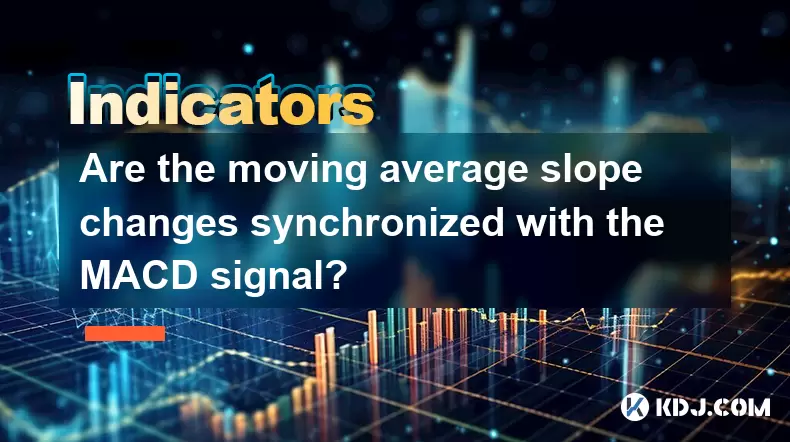
Are the moving average slope changes synchronized with the MACD signal?
In the world of cryptocurrency trading, technical analysis plays a crucial role in helping traders make informed decisions. Two popular tools used in this analysis are the Moving Average (MA) and the Moving Average Convergence Divergence (MACD). Traders often wonder if the slope changes of moving averages are synchronized with the MACD signal. This article delves into this question, exploring the relationship between these two indicators and how they can be used together to enhance trading strategies.
Understanding Moving Averages
Moving Averages (MAs) are fundamental tools in technical analysis, used to smooth out price data and identify trends. They are calculated by averaging a cryptocurrency's price over a specific period. The two most common types of moving averages are the Simple Moving Average (SMA) and the Exponential Moving Average (EMA).
Simple Moving Average (SMA): This is calculated by taking the arithmetic mean of a given set of prices over a specified number of periods. For example, a 20-day SMA would be the average of the closing prices of the last 20 days.
Exponential Moving Average (EMA): This places more weight on recent prices, making it more responsive to new information. The formula for an EMA involves the previous EMA value and the current price, allowing for quicker adjustments to price changes.
The slope of a moving average indicates the direction and strength of the trend. An upward slope suggests a bullish trend, while a downward slope indicates a bearish trend. Changes in the slope can signal potential trend reversals or continuations.
Understanding MACD
The Moving Average Convergence Divergence (MACD) is a trend-following momentum indicator that shows the relationship between two moving averages of a cryptocurrency's price. The MACD is calculated by subtracting the 26-period EMA from the 12-period EMA. The result of this calculation is the MACD line. A 9-period EMA of the MACD line, called the signal line, is then plotted on top of the MACD line.
The MACD can be used to identify potential buy and sell signals:
Bullish Signal: When the MACD line crosses above the signal line, it is considered a bullish signal, suggesting that it might be a good time to buy.
Bearish Signal: Conversely, when the MACD line crosses below the signal line, it is considered a bearish signal, indicating a potential selling opportunity.
Relationship Between Moving Average Slope Changes and MACD Signals
To understand whether moving average slope changes are synchronized with MACD signals, we need to examine how these indicators interact and influence each other.
Moving Average Slope Changes: A change in the slope of a moving average, whether from upward to downward or vice versa, can indicate a shift in the market trend. For example, if the 50-day EMA transitions from an upward slope to a downward slope, it suggests that the short-term bullish trend may be weakening.
MACD Signals: The MACD line crossing the signal line generates buy or sell signals. These signals can occur before, during, or after a change in the slope of a moving average.
Analyzing Synchronization
Synchronization between moving average slope changes and MACD signals is not always perfect. However, there are instances where these two indicators can work together to provide more robust trading signals.
Converging Signals: When a moving average slope change aligns with a MACD signal, it can strengthen the validity of the signal. For instance, if the 50-day EMA begins to slope downward at the same time the MACD line crosses below the signal line, it could reinforce a bearish outlook.
Diverging Signals: Conversely, if the moving average slope changes in one direction while the MACD signal suggests the opposite, it may indicate a false signal or a potential reversal. For example, if the 50-day EMA continues to slope upward but the MACD line crosses below the signal line, it could suggest that the bullish trend is losing momentum.
Practical Application in Trading
Traders can use the combination of moving average slope changes and MACD signals to enhance their trading strategies. Here’s how they can be applied in practice:
Entry and Exit Points: Use the moving average slope changes to identify the overall trend and the MACD signals to fine-tune entry and exit points. For example, if the 200-day SMA shows a long-term bullish trend and the MACD line crosses above the signal line, it could be a strong buy signal.
Confirmation of Trends: Use the moving average slope changes to confirm the trend indicated by the MACD. If the MACD suggests a bullish trend and the moving average slopes upward, it provides a more reliable signal.
Risk Management: Combine these indicators to manage risk. For instance, if the moving average slope changes suggest a potential reversal and the MACD confirms it, traders can adjust their stop-loss orders accordingly.
Examples of Synchronization and Divergence
Let’s look at some specific examples to illustrate how moving average slope changes and MACD signals can synchronize or diverge:
Synchronization Example: Suppose Bitcoin’s 50-day EMA has been sloping upward, indicating a bullish trend. At the same time, the MACD line crosses above the signal line. This alignment of indicators suggests a strong buy signal, as both the trend and momentum are bullish.
Divergence Example: Consider a scenario where Ethereum’s 200-day SMA begins to slope downward, suggesting a bearish long-term trend. However, the MACD line crosses above the signal line, indicating a bullish short-term signal. This divergence could suggest that the bearish trend might be losing steam, or it could be a false signal, prompting traders to exercise caution.
Using Multiple Timeframes
Traders often use multiple timeframes to gain a more comprehensive view of the market. Here’s how moving average slope changes and MACD signals can be analyzed across different timeframes:
Short-term Timeframe: On a 1-hour chart, the 20-period EMA and MACD can be used to identify short-term trends and momentum. If the 20-period EMA slopes upward and the MACD line crosses above the signal line, it could signal a short-term buying opportunity.
Medium-term Timeframe: On a daily chart, the 50-day EMA and MACD can provide insights into medium-term trends. If the 50-day EMA begins to slope downward and the MACD line crosses below the signal line, it could indicate a medium-term selling opportunity.
Long-term Timeframe: On a weekly chart, the 200-day SMA and MACD can be used to assess long-term trends. If the 200-day SMA slopes upward and the MACD line crosses above the signal line, it could suggest a long-term bullish trend.
FAQs
Q1: Can moving average slope changes be used as standalone signals for trading?
A1: While moving average slope changes can provide valuable insights into trend direction, they are generally more effective when used in conjunction with other indicators like the MACD. Relying solely on moving average slope changes may lead to missed opportunities or false signals, as they do not account for momentum or volume.
Q2: How can traders avoid false signals when using moving average slope changes and MACD signals together?
A2: To minimize false signals, traders should:
- Use multiple timeframes to confirm signals.
- Look for convergence between different indicators.
- Incorporate volume analysis to validate the strength of the signals.
- Implement risk management strategies, such as setting stop-loss orders, to protect against unexpected market movements.
Q3: Are there specific moving average periods that work best with the MACD for cryptocurrency trading?
A3: The choice of moving average periods can vary based on the trader's strategy and the specific cryptocurrency being analyzed. Common combinations include:
- 12-period and 26-period EMAs for the MACD, with a 9-period signal line.
- 20-period and 50-period EMAs for short-term and medium-term trends.
- 200-period SMA for long-term trend analysis.
Traders should experiment with different periods to find what works best for their trading style and the volatility of the cryptocurrency they are trading.
Q4: How can traders use moving average slope changes and MACD signals to identify potential trend reversals?
A4: To identify potential trend reversals, traders can:
- Monitor for a change in the slope of a moving average, such as the 50-day EMA or 200-day SMA, which can signal a shift in the trend.
- Look for divergences between the price and the MACD, where the price makes a new high or low but the MACD does not follow suit.
- Use the MACD histogram to gauge the momentum of the trend; a shrinking histogram can indicate weakening momentum and a potential reversal.
- Combine these indicators with other reversal patterns, such as candlestick formations or support and resistance levels, to confirm the reversal signal.
Disclaimer:info@kdj.com
The information provided is not trading advice. kdj.com does not assume any responsibility for any investments made based on the information provided in this article. Cryptocurrencies are highly volatile and it is highly recommended that you invest with caution after thorough research!
If you believe that the content used on this website infringes your copyright, please contact us immediately (info@kdj.com) and we will delete it promptly.
- Starting June 16, the Floki team will run a five-week global marketing campaign for its play-to-earn game, Valhalla.
- 2025-06-13 04:00:45
- Nightmare Accessory Airdrop 2 rewards will be distributed in June
- 2025-06-13 04:00:45
- Brazil Implements New Crypto Tax Rules That Will Benefit the Rich
- 2025-06-13 03:56:44
- Solana Surges 14% Following Clear Buy Signal, Drawing Renewed Attention
- 2025-06-13 03:50:13
- Chainlink, JPMorgan and Ondo Finance Enable Crosschain Treasury Settlement Breakthrough
- 2025-06-13 03:50:13
- Kaanch Network is a leader in the cryptocurrency market, which provides a Layer-1 blockchain solution
- 2025-06-13 03:45:13
Related knowledge
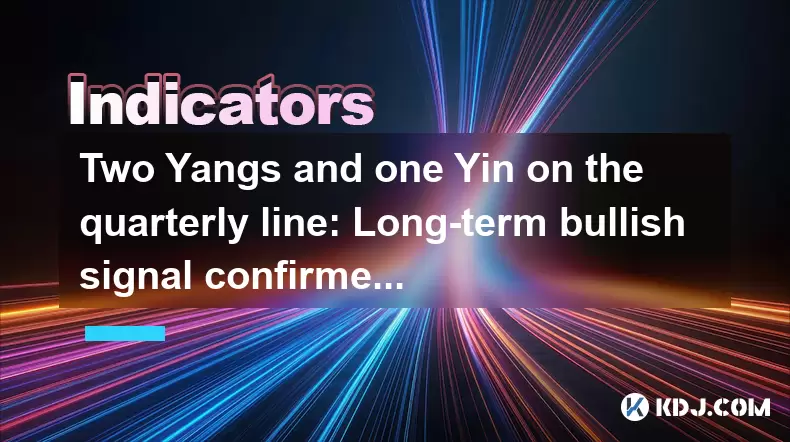
Two Yangs and one Yin on the quarterly line: Long-term bullish signal confirmed?
Jun 12,2025 at 07:00am
Understanding the 'Two Yangs and One Yin' Candlestick PatternIn technical analysis, candlestick patterns play a pivotal role in identifying potential market reversals or continuations. The 'Two Yangs and One Yin' pattern is one such formation that traders often observe on longer timeframes like the quarterly chart. This pattern consists of two bullish (...
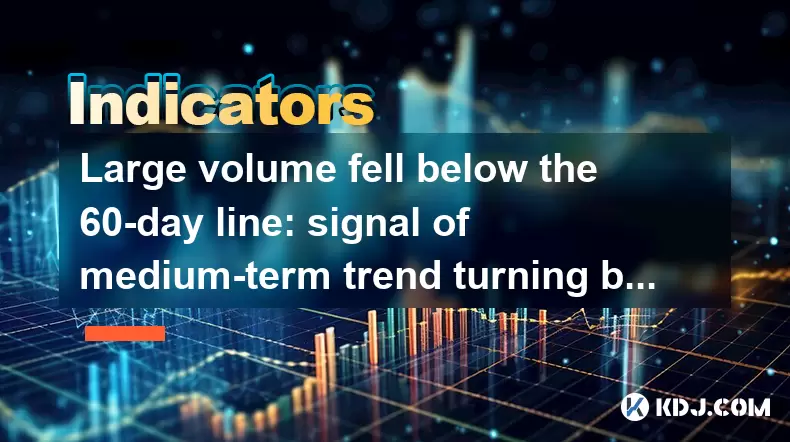
Large volume fell below the 60-day line: signal of medium-term trend turning bearish?
Jun 13,2025 at 03:42am
Understanding the 60-Day Moving Average in CryptocurrencyIn cryptocurrency trading, technical analysis plays a crucial role in predicting price movements. One of the most commonly used indicators is the 60-day moving average (MA), which smooths out price data over the last 60 days to provide traders with insights into the medium-term trend. When large v...
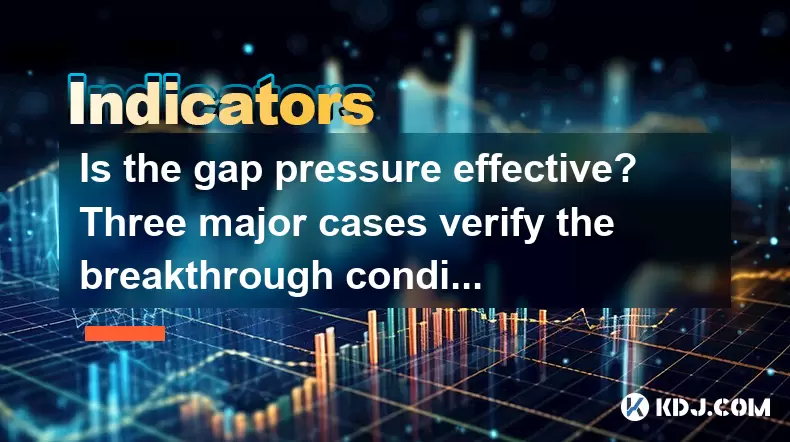
Is the gap pressure effective? Three major cases verify the breakthrough conditions
Jun 13,2025 at 04:35am
Understanding the Gap Pressure in Cryptocurrency TradingIn cryptocurrency trading, gap pressure refers to a technical analysis concept where price gaps form due to sudden market movements. These gaps often occur between the closing price of one trading session and the opening price of the next. Traders pay close attention to these gaps because they can ...
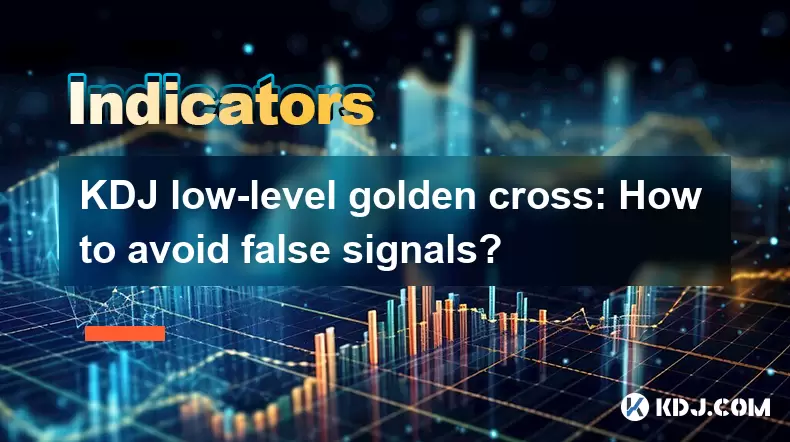
KDJ low-level golden cross: How to avoid false signals?
Jun 12,2025 at 08:21am
Understanding the KDJ IndicatorThe KDJ indicator, also known as the stochastic oscillator, is a momentum-based technical analysis tool widely used in cryptocurrency trading. It consists of three lines: the %K line (fast stochastic), the %D line (slow stochastic), and the %J line (divergence value). These lines oscillate between 0 and 100, helping trader...

Bottom-up volume stagnation: Is it accumulation or heavy selling pressure?
Jun 12,2025 at 01:42pm
What Is Bottom-Up Volume Stagnation?Bottom-up volume stagnation refers to a specific pattern observed in cryptocurrency trading charts where the price of an asset moves sideways or slightly downward, and trading volume remains consistently low over an extended period. This phenomenon is often seen after a sharp price drop or during a prolonged bear mark...
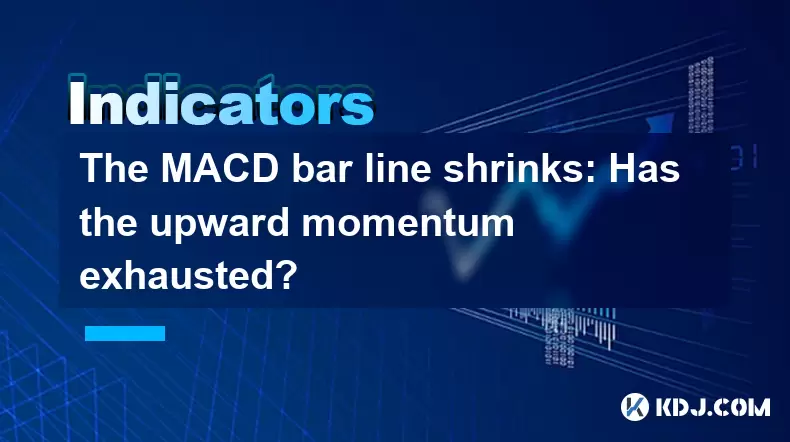
The MACD bar line shrinks: Has the upward momentum exhausted?
Jun 12,2025 at 12:49am
Understanding the MACD Bar LineThe Moving Average Convergence Divergence (MACD) is a widely used technical indicator in cryptocurrency trading. It consists of three main components: the MACD line, the signal line, and the MACD histogram (also known as the bar line). The MACD bar line represents the difference between the MACD line and the signal line. W...

Two Yangs and one Yin on the quarterly line: Long-term bullish signal confirmed?
Jun 12,2025 at 07:00am
Understanding the 'Two Yangs and One Yin' Candlestick PatternIn technical analysis, candlestick patterns play a pivotal role in identifying potential market reversals or continuations. The 'Two Yangs and One Yin' pattern is one such formation that traders often observe on longer timeframes like the quarterly chart. This pattern consists of two bullish (...

Large volume fell below the 60-day line: signal of medium-term trend turning bearish?
Jun 13,2025 at 03:42am
Understanding the 60-Day Moving Average in CryptocurrencyIn cryptocurrency trading, technical analysis plays a crucial role in predicting price movements. One of the most commonly used indicators is the 60-day moving average (MA), which smooths out price data over the last 60 days to provide traders with insights into the medium-term trend. When large v...

Is the gap pressure effective? Three major cases verify the breakthrough conditions
Jun 13,2025 at 04:35am
Understanding the Gap Pressure in Cryptocurrency TradingIn cryptocurrency trading, gap pressure refers to a technical analysis concept where price gaps form due to sudden market movements. These gaps often occur between the closing price of one trading session and the opening price of the next. Traders pay close attention to these gaps because they can ...

KDJ low-level golden cross: How to avoid false signals?
Jun 12,2025 at 08:21am
Understanding the KDJ IndicatorThe KDJ indicator, also known as the stochastic oscillator, is a momentum-based technical analysis tool widely used in cryptocurrency trading. It consists of three lines: the %K line (fast stochastic), the %D line (slow stochastic), and the %J line (divergence value). These lines oscillate between 0 and 100, helping trader...

Bottom-up volume stagnation: Is it accumulation or heavy selling pressure?
Jun 12,2025 at 01:42pm
What Is Bottom-Up Volume Stagnation?Bottom-up volume stagnation refers to a specific pattern observed in cryptocurrency trading charts where the price of an asset moves sideways or slightly downward, and trading volume remains consistently low over an extended period. This phenomenon is often seen after a sharp price drop or during a prolonged bear mark...

The MACD bar line shrinks: Has the upward momentum exhausted?
Jun 12,2025 at 12:49am
Understanding the MACD Bar LineThe Moving Average Convergence Divergence (MACD) is a widely used technical indicator in cryptocurrency trading. It consists of three main components: the MACD line, the signal line, and the MACD histogram (also known as the bar line). The MACD bar line represents the difference between the MACD line and the signal line. W...
See all articles

























































































